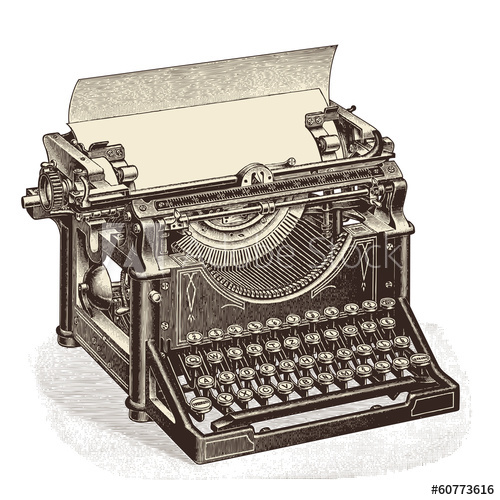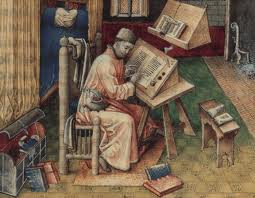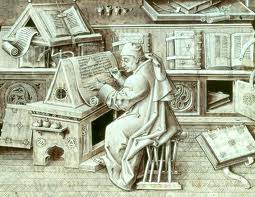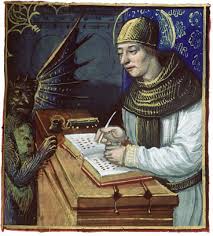
by Sandra Gulland | Jul 12, 2014 | Adventures of a Writing Life, The Writing Process |
I explained in an earlier post what the Writers’ Blog Tour is about. Basically, writers answer the same four questions:
I’ve answered the first and second questions this week, and so, for today, here’s the third:
How does my work differ from other work in its genre?
This is an interesting question.
In one respect I am clearly different from my fellow historical fiction writers: I’m slow. But that isn’t the thrust of the question.
I aspire to write literary historical fiction, simply because that’s what I love best to read, but I’m also committed to writing fiction that’s accessible and compelling. (I hope.) My “voice” is perhaps more simple than that of most writers of historical fiction. I’m a fan of plain speaking and try to pare my work down. I’d like to be witty, but I don’t have that kind of brain. I think that my novels are just a little comic, and I tend to go light on political and military history. I am much more interested in daily life, specifically the lives of women.
The next and last question on the Tour is a big one: How does my writing process work?
Once up, I’ll hand the baton to Lauren B. Davis (author of Our Daily Bread and The Empty Room, for starters) and Catherine McKenzie (author of Forgotten, Hidden, and Spin).
I’m enjoying this Tour.

by Sandra Gulland | Apr 21, 2014 | Adventures of a Writing Life, On Research, The Shadow Queen, The Writing Process |
Given the recent revelations about French President François Hollande’s personal life, I think future writers of historical fiction are fortunate. They will have so many details to go on, from photos of President Hollande arriving for a rendezvous on a scooter to tweets sent by the former First Lady, his live-in mistress Valerie Trierweiler.

In writing biographical historical fiction that involves a public figure, it’s often difficult to discover how an intimate relationship evolves.
While writing my newest novel, THE SHADOW QUEEN, it was easy enough to see how lovers met, but a little more difficult to sort out how, exactly, a more intimate relationship came about—for these lovers were all “in the family,” so to speak:
Athénaïs, Madame de Montespan (Mistress 2) was the good friend of Louise de la Vallière (Mistress 1)—or so Louise thought.
Madame de Maintenon (Mistress 3) worked for Athénaïs (Mistress 2), as governess of her children by the King.
Claudette des Oeillets—heroine of THE SHADOW QUEEN who has a child by the King (rather a Mistress 3.5)—also worked for Athénaïs (Mistress 3) as her lady’s maid, and one has to presume that this arrangement was with Athénaïs’s approval.
The Hollande family tree, however, will be as difficult for future historical novelists to sort out as in days of old, and in this respect I don’t envy them in the least. Ms Ségolène Royal, Hollande’s former common-law wife, is the unmarried mother of his four children. Ms Trierweiler, his second partner, has three children by her second husband. That’s a family-menage of seven children—way too many to manage in a scene.
Film actress Julie Gayet, the newest Other Woman, has two children by her first husband, but it’s up for grabs whether or not she will be moving into the Élysée Palace, the official residence of the President of the French Republic. If she does, the international Press, you can be sure, will be watching.
There is a general perception that it is not uncommon for French leaders to have a mistress. Is this, however, fair? In the 16th, 17th and 18th centuries, having a mistress was almost a requirement for a French, English, Spanish or German king. Understandably, in my view, given that royalty had to marry for political reasons, not love.

Louis XIV, the Sun King, was a rather monogamous adulterer: he usually had only one mistress at a time. His cousin Charles II of England, however, had several mistresses at once. (The most famous was actress Nell Gwynn, who is reported to have once sabotaged a rival by putting laxatives in her food before her rendezvous with the King.)
In modern history, Edward VIII abdicated in 1936 in order to be with his mistress, the divorcee Wallis Simpson. Prince Charles married his long-term mistress Camilla Parker Bowles. And then, of course, we have President Clinton and Monica Lewinsky.
In one respect, I venture to say that the French do take the cake. A number of French shadow queens were significantly powerful women.
Gabrielle d’Estrees, the Catholic mistress of Protestant Henri IV, helped end France’s religious wars.
King Henri II’s mistress, Diane de Poitiers, imposed taxes, appointed ministers and made laws.
And, lest you think that the role of shadow queen is strictly sexual, consider Madame de Pompadour, who was King Louis XV’s mistress for almost two decades, despite—I’ve read—being unable to have intercourse. Instead, she provided the King with young women to sleep with.
I admire the French public for considering it none of the press’s business what their leaders do in their personal life … which makes me feel just a little trashy for even mentioning it all here. But then, I’m just thinking ahead, academically speaking. ;-)
Have you ever noticed how the word “courtesan” has the word “court” in it? From Wikipedia:
“In Renaissance usage, the Italian word cortigiana, feminine of cortigiano (“courtier”) came to refer to “the ruler’s mistress”, and then to a well-educated and independent woman of loose morals, essentially a trained artisan of dance and singing, especially one associated with wealthy, powerful, or upper-class men who provided luxuries and status in exchange for companionship.”
SaveSave
by Sandra Gulland | Dec 1, 2013 | Adventures of a Writing Life |
This Goodreads list of historical fiction being published next year is illuminating. I’m looking forward to new Sarah Waters and Emma Donoghue novels, as well as a number of others.
What’s interesting about the list is that Goodreads readers have weighed in on which novels they are most looking forward to reading.

I’m hugely pleased that my virtual author friend M.J. Rose’s next novel, THE COLLECTOR OF DYING BREATHS (great title, beautiful cover), is number one on the list!
I’m also quite pleased that THE SHADOW QUEEN is now at #23. Yay!
I would also, of course, be extra pleased if you cast a vote for it. (In fact, in terms of voting, go nuts: you can vote for 100 books.)
Feel free to sprinkle stars all around as well, and add books to your “To Read” shelf. You would be surprised how important this is to publishers.
;—)
by Sandra Gulland | Oct 16, 2013 | Adventures of a Writing Life |

I’ve enrolled in “Plagues, Witches, and War”—a free on-line Coursera class on historical fiction. It’s awesome! I’m busy right now preparing for our move south, but I always have time for reading. You can see the course reading list here.
I read two of the “core” articles yesterday, both of them excellent, ones I would recommend to anyone interested in historical fiction.
Here’s from the excellent article by Ian Mortimer (who is both an academic, and writer of historical fiction under the name James Forrester), on “Why Historians should Write Fiction“:
“It teaches you how little you really know about the minutiae of the past, and destroys professional complacency. It humbles even the most experienced researcher. It demands that you think deeply about human character, and how it is formed, and how people integrate. But most of all it shows you that there is a different sort of truth beyond the measurements of facts and dates: truths about human nature which are timeless, or, at least, very slow-moving. And it leaves you thinking that these truths, although they are unproveable, are probably the most important historical conclusions of all, for they reflect what we are, and what we can be, both as individuals and as a society.”

The other article is a New Yorker profile of Hilary Mantel: “The Dead are Real.” It moved me profoundly.
Mantel on character development
Right now, between drafts, I’m often simply thinking and making notes about Hortense and her world, exploring character. A technique Mantel sometimes uses for getting to know her characters interests me:
“When she’s starting a new book, she needs to feel her way inside the characters, to know what it’s like to be them. There is a trick she uses sometimes, which another writer taught her. Sit quietly and withdraw your attention from the room you’re in until you’re focussed inside your mind. Imagine a chair and invite your character to come and sit in it; once he is comfortable, you may ask him questions.”
(A technique which dovetails nicely with another “course” I’m taking, on learning to meditate.)
Mantel on making changes to the historical record
The following passage reverberated for me especially because I recently had to sort out quite a tangle in THE SHADOW QUEEN because I had tightened the narrative timeline for dramatic purposes.
“She couldn’t always be sure that a character was in the place she said he was in at the time she put him there, but she spent endless hours making sure that he wasn’t definitely somewhere else. “Once you play around with history, it trips a whole load of consequences,” she says.”

Mantel on a certain type of writer’s block
This passage expresses a fear I often have, and most writer have as well:
“I don’t think one ever quite learns to trust the process,” she says. “I feel, What if I wake up tomorrow and I can’t do it anymore? I know I’ll always be able to write, in the sense of having a robust style that’s sufficient to the occasion, and I know that books can be got onto the page by craft, but the thing that makes a phrase that fizzes on the paper—you always fear that may not be there any longer, because, after all, you did nothing to deserve it. You did nothing to contrive it. It’s just there. You don’t understand it, it’s out of your control, and it could desert you.”
Fortunately, I’m not a writer of phrases that fizz, but there is a certain passion and energy that one brings to a story and I do worry about fatigue. The cure for that, for me, is invariably research and inspiring reading. I’ve chosen to read A Tale of Two Cities by Charles Dickens for the class: such a passionate writer!
by Sandra Gulland | Oct 12, 2013 | Adventures of a Writing Life |

I recently read a review of the iSteve movie in the July 2013 issue of MacWorld. I quote:
Despite the movie’s liberties–and it takes a lot of them–it adopts at times a surprising fidelity to historical events. In the end, you might best describe the film as “truth-adjacent.”
I like the term “truth-adjacent” and may adopt it. Another description that seems to be used in the UK but not in North America is “biographical fiction,” which describes my work exactly. “Fact-based fiction” is a term commonly used here, but I dislike it: it has a medicinal flavor.
How would you describe fiction that is based on fact?
SaveSave
SaveSave










